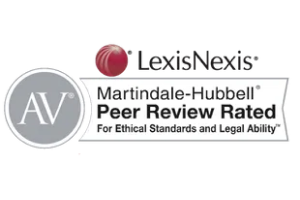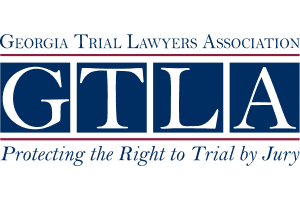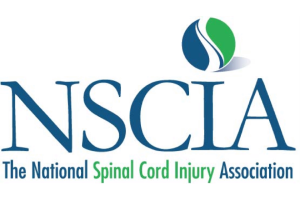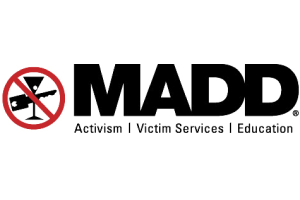What To Do and Not Do Following a Drunk Driving Crash – Continued
13. Collect and Store All Relevant Physical Evidence from the Scene of the Accident.
Efforts should be made to gather and securely store any relevant physical evidence which can be removed from the scene of the accident. Use good judgment in deciding what physical evidence can or should be removed from the scene. Some examples of evidence which might later prove valuable and worth collecting would include tires or parts of tires which blew or failed and contributed to the crash, automobile parts which came off before or after impact, or road debris which contributed to the accident. Of particular importance would be drug paraphernalia, beer cans, liquor bottles, or other containers of alcohol which the drunk driver or an occupant of the drunk driver’s car discarded in an attempt to hide such evidence before the police arrived. The process of gathering physical evidence can begin at the scene immediately after the crash. It is also a good idea for someone to go back to the scene within the next few days or as soon as possible to see if there is any relevant physical evidence.
Three things should be done any time physical evidence is removed from the site of an accident. One, the collector should make sure that removal of the item is not unlawful. If in doubt, check with the police or government agency responsible for the roads at issue, or contact the owner of the piece of evidence. Two, document where the evidence was found prior to its removal. The best way to do this is with photographs, videotapes and/or a diagram with measurements showing where the evidence was located prior to removal relative to other stationary points of reference. It is also helpful for an extra person to assist with the gathering and removal of physical evidence so that they can testify and confirm the location of the item and the manner of its collection. Three, once removed, the physical evidence must not be disturbed or altered, and it must be securely stored to prevent its destruction or compromise. In order to be used in a civil case, witnesses will have to establish a “chain of custody” for any physical evidence. To establish a “chain of custody,” there will need to be witness testimony or other proof about where and how evidence has been located, moved and stored, as well as all persons who have handled or had access to the evidence. So, the handling, movement and storage of any physical evidence will need to be documented in detail.
14. If a Fatality or Serious Injury Is Involved, Retain Possession and Do Not Dispose of the Victim’s Damaged Vehicle and/or any Tire Which Failed
The most important evidence in any case involving product liability claims against an automobile manufacturer is the damaged vehicle itself. Therefore, if there is any reason to suspect that disrepair, defects or problems with the vehicle played a role in the crash or the severity of injuries sustained by the victim, it is critical that the damaged vehicle be secured. The same is true for any tires which may have blown or failed prior to the crash. Immediate steps must be taken to find out where the vehicle was taken and to make sure that nothing is done to repair, sell, salvage or otherwise dispose of the vehicle. In fact, the vehicle and/or any tire which failed needs to be placed in a secure storage pending further investigation and analysis by qualified experts. The owner of the damaged vehicle has the right to secure possession of the same upon payment of any outstanding bills for wrecker services or storage. If the vehicle is repaired, altered or not available for inspection, the victim will most likely forfeit his opportunity to successfully pursue a product liability claim. Securing and storing damaged vehicles following a crash can be quite expensive. Especially where there are ample good photographs or videotapes showing the type, location and extent of damages to the vehicle, it is probably not necessary to keep and store the damaged vehicle in any case where a death or serious injury is not involved.
15. Attempt to Retrieve All Information from any Event Data Recorder (“Black Box”) Equipped on any Vehicle Involved in the Crash.
Most vehicles manufactured in the last 5-10 years are equipped with one or more “Event Data Recorders” (EDR). Sometimes these are referred to as the automobile “black box.” An EDR is a computerized device which will record certain types of information about the vehicle during certain types of “events” such as a crash. Most EDRs in automobiles and light trucks are part of the restraint system control module and their primary purpose is to detect actual or potential impacts and subsequently deploy airbags and/or seatbelt tensioners. When these “events” take place, an EDR may record certain types of information into its memory. Depending upon the EDR, some of the information which may be recorded include speeds before and/or after impact, brake status, engine RPM’s, throttle positions and whether the driver’s seat belt was fastened. Trained forensic experts are sometimes able to retrieve one or more EDRs after a crash and obtain valuable information which was recorded in the memory of the vehicle’s “black box.” If the cause or circumstances of a serious crash is unknown or disputed, efforts should be made to obtain and preserve EDRs from the involved vehicles for analysis by a reconstruction expert.
16. Determine and Obtain Information About Where the Drunk Driver Consumed Alcohol Before the Crash.
There can be no dram shop or social host claim unless it is known where and when the drunk driver obtained the alcohol that led to his intoxication at the time of the crash. Therefore, effort should be made to learn the location(s) where the drunk driver purchased or consumed alcohol prior to the crash, the times he did that, the amount of alcohol he purchased or consumed at such location(s), and the person(s) he may have been with when such alcohol was purchased or consumed. Sources of this information may include the drunk driver’s friends or companions, employees who sold or served alcohol to the drunk driver, patrons or guests who witnessed the drunk driver consume alcohol, newspaper articles, police officers, prosecutors or investigators working in the prosecutor’s office.
17. Immediately Attempt To Obtain Surveillance or Security Videotapes From Any Business that Sold or Served Alcohol to the Drunk Driver Prior to the Crash.
Obviously, any videotapes which show the drunk driver buying, being served or consuming alcohol would be invaluable evidence in a civil case against the drunk driver or a dram shop case against the business or person who negligently provided alcohol to the drunk driver. Unfortunately, most businesses do not usually retain security videotapes for more than a few days or weeks. The tapes are often re-used on a periodic basis which effectively erases previous recordings. Therefore, it is critical that efforts be made as soon as possible to secure videotapes that may reveal something about the drunk driver’s pre-crash purchase or consumption of alcohol. If videotapes are not secured within the first few days or weeks after the crash, they likely will be discarded or erased.
The hope would be that the person or business with the videotapes would preserve and give the original or copy to any victim or family of a victim who makes a request for the same. However, any videotape is the property of the person or business who owns the premises and/or the surveillance equipment, and there is no legal requirement that such videotape be made available to another citizen. Thus, prior to a lawsuit being filed, there is no way a victim or his family can compel or “force” a private person or company to turn over videotapes taken at their premises. In the case of an uncooperative owner who will not voluntarily turn over surveillance videos, two things can be done. First, the victim can hire a lawyer, file a lawsuit and then use the subpoena power of the court to force the videotape to be produced. Second, prior to filing a civil lawsuit, a letter should be sent demanding that the videotape be preserved and not erased or discarded. Such a letter should explain the circumstances and why the videotape is needed. The letter should also state that if the videotape is not preserved, the victim might pursue a claim for spoliation of evidence.
18. If a Police Chase Contributed to the Crash, Immediately Attempt to Obtain the Patrol Car Camera Video and Tape of the Radio Transmissions by the Officers Involved.
In some limited circumstances, county or city police departments in Georgia can be held liable where an innocent motorist is killed or injured in a crash which results from a recklessly performed high speed police chase of a criminal suspect. Therefore, if the crash occurred as a result of a police chase situation, the recording of all police radio transmissions taking place during or immediately after the chase (before they are erased or discarded by the police) can be critical evidence. Provided they are not part of ongoing criminal proceedings, such recordings are public record, and can be obtained by private citizens under Georgia’s Open Records Act, O.C.G.A. § 50-18-70. Likewise, the chase itself may have been recorded by the officer’s in-car video camera system. That tape should also be requested as soon as possible.
19. Obtain and Review All Automobile Insurance Policies Which Might Provide UM Coverage or Other Insurance Benefits to the Victim.
In the aftermath of a drunk driving crash, numerous expenses will arise including the cost to repair or replace the damaged vehicle, medical expenses, lost wages, and funeral/burial expenses in the case of a death. Some or all of these expenses may be covered by the injured victim or decedent’s own automobile insurance policy. Therefore, it is important to determine what automobile insurance policies were purchased by the victim or might otherwise provide coverage and benefits to the victim or the decedent’s family. Be aware that more than one automobile policy might provide benefits to the victim or his family.
This point is especially important in the context of uninsured/underinsured motorist (UM) coverage. The UM limits of any automobile insurance policy purchased by the victim and/or any relative of the victim who lived in the victim’s household at the time of the crash potentially can be “stacked” together to increase the amount of UM coverage available to the victim or his family. In addition, if the victim was driving or riding in another person’s vehicle, then he or she may be entitled to “stack” and take advantage of any UM coverage on the auto policy insuring the vehicle which the victim occupied at the time of the crash. Likewise, if the victim was driving his employer’s vehicle, he may be insured under both an automobile policy provided by his employer, as well as his own personal automobile policy. Be vigilant in your search for any automobile policy which may potentially provide benefits and coverage to the victim. Do not mistakenly assume that the policy on the vehicle involved in the crash is the only automobile policy which is relevant.
20. Contact and Report the Accident to Every Insurance Company with an Auto Policy Insuring the Drunk Driver, the Victim, and/or Either of the Vehicles Involved in the Crash.
The victim or someone on behalf of the victim should provide notice of the accident to each and every insurance company that provides an auto policy covering or insuring the drunk driver, the vehicle he was driving, and/or the owner of that vehicle. Do not assume that the drunk driver or owner of the at-fault vehicle will report the accident to his insurer. The victim should never run the risk that the drunk driver’s auto insurer later attempts to deny coverage for the victim’s liability claim or grounds that its insured failed to give the insurer reasonable notice of the accident. When reporting the accident to the auto insurer covering the drunk driver and/or the at-fault vehicle owner, let that insurer know that a liability claim against its insured may be pursued.
It is even more important to give a prompt report of the accident to any insurance company which issued a policy covering or insuring (i) the vehicle driven or occupied by the victim at the time of the crash, (ii) the victim, and/or (iii) any member of the victim’s family who lived in the victim’s household at the time of the crash. There may be one or there may be multiple auto policies which named, included or covered the victim, the victim’s household family members or the vehicle involved in the accident. Each policy needs to be identified and each company providing each such policy needs to be advised when and where the crash took place. Most auto policies contain provisions that require the policyholders to give the insurance company notice of an accident within a certain number of days (usually 30 or 60) or “as soon as practical.” Failure to give timely notice of an accident to an automobile insurer could result in UM or other coverages being denied. Therefore, it is critical that as soon as possible, someone needs to contact each insurance company which may potentially provide UM coverage and advise it of the circumstances of the crash.
21. Do Not Give Written or Recorded Statement to the Drunk Driver’s Insurance Company.
Simply put, the drunk driver’s insurance company has no authority to require the victim to do anything. The policy establishes a contractual relationship between the drunk driver and his insurer, but no such contract exists between the victim and that insurance company. Therefore, the victim has no obligation to give a written or recorded statement, and the victim should decline to do so if asked by the insurance company insuring the drunk driver or the at-fault vehicle. Likewise, the victim should not give any written or recorded statement to any insurance company providing liability coverage to any other potential defendant. If a written or recorded statement is to be given to any insurance company for a potential adverse party, it should be done only after consultation with and on the advice of an attorney. Even after hiring an attorney, the victim is likely to be told by the attorney not to provide any written or recorded statements to an insurance company or anyone else associated with the drunk driver or any other potential defendant. There is little to be gained from giving a statement. Yet, the downside is significant because any written or recorded statement can later be used against the person giving it. Whenever there is contact or communication between the victim and an adverse insurance company, make sure you tell the insurance company representative that you do not consent to anything being recorded. Likewise, do not fill out any questionnaires or other written documents asking the victim to comment on how the accident happened.
22. Do Not Sign Release or Settlement Documents Provided by an Insurance Company Without Fully Understanding the Effect of Doing So or Having First Consulted with an Attorney.
If a victim or the victim’s family accepts any money from an insurance company, they usually will be asked to sign a “release” or other type of settlement document. Before signing any document (especially one prepared by an insurance company) in connection with the receipt of any money or settlement of any claims, the victim or victim’s family must inquire and fully understand the nature of the document and the effect it will have. For example, if the drunk driver’s insurance company offers any amount under its policy or any amount in settlement of the victim’s claims against the drunk driver, the release signed by the recipient of those proceeds may waive and foreclose the victim’s right to sue the drunk driver or possibly other culpable parties for personal injuries or wrongful death.
An exception occurs when the offer of money relates only to the damages to the victim’s automobile. A victim can settle his claims for property damages without releasing the drunk driver from claims for personal injuries or wrongful death. However, careful reading of the settlement documents must be made to ensure that the settlement is expressly limited to property damages and does not impact the personal injury or wrongful death claims.
The golden rule is do not be pressured into signing something which is not fully understood. If the victim desires to bring a lawsuit against the persons or parties responsible for the crash, he should resolve all doubts in favor of not signing any documents presented by an automobile insurance company.
23. If the Victim Was Working at the Time of the Crash, He Must Report the Accident to His Employer within 30 Days.
Most people in Georgia are entitled to receive workers compensation benefits if they are injured while working. This applies to motor vehicle accidents which occur while an employee is driving a car or truck in connection with his or her employment. Under Georgia workers compensation law, an employee is required to notify his supervisor or employer that he or she has suffered a work-related injury within 30 days of the date of the accident causing such injuries. Therefore, if you are injured by a drunk driver while working, then you must report the accident to your employer within 30 days in order to preserve your potential workers compensation case.
24. Take Photographs and/or Videotapes of the Victim’s Injuries
If appropriate, the injured victim should have photographs of any visible injuries made at regular intervals. Begin taking photographs when the victim is in the hospital and continue taking photographs throughout the period of his recovery. If there are serious lacerations, bruises or burns, focus upon these in taking the photographs before they heal. These photographs will be the best way to show the jury the nature of the injuries sustained and the discomfort which the victim experienced as a result of the crash. Of course, photographs should not be taken if the victim does not consent or to do so would cause him embarrassment or distress. The purpose of photographing the victim is to document his injuries, but they should not be taken at the cost of causing any additional harm or re-victimization. If the victim is required to go through painful or uncomfortable procedures on a regular basis, such as physical therapy or debridement of a burn, prepare a videotape of an illustrative procedure. Sometimes, these are called “day in the life” films and they can be extremely effective in showing the jury visually what the victim had to undergo during his recovery.
25. Make a Record of all Incidental Costs Associated with Obtaining Medical Care.
Often overlooked are the incidental costs associated with obtaining medical treatment. Obviously, the fee charged by a doctor, hospital or other health care provider is an element of the victim’s damages which the drunk driver or other defendant may be obligated to pay. However, the expenses associated with obtaining medical care also are recoverable. Examples of these expenses include the cost of paying a baby sitter while the victim keeps a medical appointment, parking fees at the hospital or doctors’ offices, lost income or wages incurred due to time away from work to get medical treatment, and the cost of traveling to the hospital or physician’s office (usually computed as so many cents per mile). The victim should keep an accurate and ongoing record of these type of expenses.
26. Obtain and Keep Copies of All Medical and Pharmaceutical Bills Prior to their Submission to any Insurance Company for Payment.
Any victim or his attorney will need to gather all billing invoices and other records so as to fully and accurately document the cost of all medical care, prescription drugs, orthopaedic devices, and medical supplies. It is better to obtain this documentation as the victim receives the medical care or incurs the pharmaceutical expenses than to attempt to collect these records months or years later. Asking for and collecting copies of billing statements at or near the time the medical care is received will allow documentation of the full cost of the medical treatment before the balance is reduced by the receipt of payments by an insurance company. Georgia recognizes the “collateral source rule.” This rule prohibits the defendant from introducing evidence regarding the payment of medical bills or other expenses by “collateral sources” such as the plaintiff’s group health insurer at work. Most health care providers will process a victim’s medical bills through an insurance company directly. If they do, then their billing records will reflect submission of the bill to or payment by an insurance company. Therefore, it is important that the victim obtain copies of the invoices or other billing records from the hospital or treating physicians before they are processed for payment by an insurance company. It is appropriate to ask that the health care provider supply a copy of the “original” bill or invoice which reflects the medical services rendered and the costs for the same without reference to payment by one or more of the victim’s health insurance companies. At trial, the plaintiff will want to introduce medical bills which do not contain information about payments received from the victim’s insurance companies.
27. Keep a Diary of all Medical Treatment and Recovery from Injuries
Victims should keep some type of notebook or diary where they can regularly prepare notes and record information related to their recovery and ongoing medical care. It is a good idea to write down on a daily or weekly basis information about doctor appointments, medical treatment obtained, rehab procedures undertaken, the progress of recovery, problems encountered, and what generally is being experienced. This detailed information will be difficult to recall later if it is not recorded on an ongoing basis.
28. Avoid Making Statements to the Media.
Statements made to the media rarely serve to benefit the victim’s legal position, but they often prove to be detrimental. Therefore, as a general rule, it is better to avoid making comments to the media about the crash or about any potential legal claims arising from that crash. This is especially true where the victim has not received any advice from an attorney about what should or should not be said in any media interview. Statements made early before all evidence is gathered or facts are known may be inaccurate or inconsistent with a position later taken by the victim or his family. Also, whenever a victim or member of his family addresses the media, there is a chance of making ill-advised statements because of the strong emotions which naturally are present in the aftermath of a drunk driving crash. These media statements are likely to be recorded and the defense may use them against you later. Moreover, making statements to the media may “tip-off” a potential defendant about your belief that they were negligent which could then compromise your efforts to gather evidence. It is always to your advantage to investigate the unsuspecting potential defendant and his ignorance of your potential civil claim can only help your efforts to prove his culpability. The best advice is to politely decline media inquiries. If the victim has a lawyer, the media should be directed to contact that attorney.
29. Attend all Proceedings in Which the Drunk Driver Is Criminally Prosecuted Including any Traffic Court Hearings.
Critically important evidence is often introduced at hearings, trials or other proceedings in which the drunk driver faces prosecution for criminal and/or traffic charges arising from the crash. This includes matters before the traffic court and/or matters before a criminal court when the drunk driver faces more serious charges such as negligent homicide. Sometimes the drunk driver may himself testify. Someone should attend all these proceedings and take notes on all information which surfaces. A list should be compiled of the names and addresses of all persons who participate or testify at these proceedings. Prior to any hearing or trial, ask the court whether a court reporter will take down everything that is said. If so, ask how a copy of the transcript can be obtained. If a court reporter will not be present, consider asking whether a citizen can retain their own court reporter to transcribe the proceedings.
30. Drunk Driving Victims Should Obtain Legal Representation from a Civil Trial Attorney.
Whether a drunk driving victim chooses to retain an attorney is certainly their prerogative. There are instances where a victim is able to submit and handle claims involving insurance companies without legal representation. In Georgia, victims are even allowed to file pro se lawsuits and represent themselves. However, there are many good reasons to retain an attorney, and legal representation is generally thought to have many advantages. Here are just some of the benefits of having legal representation:
- More Thorough Investigations – trial attorneys are better able to conduct more thorough investigations to uncover, gather and preserve evidence needed in a civil case. Attorneys have the training and resources required to fully investigate the circumstances of a drunk driving crash. Attorneys likely know many more potential sources of information. They have experience and skills in the interviewing of witnesses. The police and prosecutors are more likely to respond to and cooperate with attorneys than with non-lawyer victims. Attorneys know the legal rules regarding the gathering and preservation of evidence.
- Protection of Legal Rights – a lawyer’s primary job is to protect the legal rights of his client. An attorney will counsel the victim about all possible civil claims which might be available and what must be done to preserve such claims. An attorney will ensure that all statutes of limitations and other applicable deadlines are met. An attorney will be able to provide ongoing legal advice about what steps will protect and enhance the value of the victim’s civil claims.
- Performing Accident Reconstruction – attorneys experienced in the field of automobile personal injury litigation will know how to obtain an accident reconstruction where the causes or circumstances of the crash are in dispute or difficult to determine. They will know what accident reconstruction experts to use and how to go about getting to these experts the information and evidence needed to “reconstruct” the crash.
- Maximizing Insurance Coverage – automobile policies and the law of Georgia governing insurance coverage are very complex to say the least. Most non-lawyer victims simply do not understand the meaning or significance of all provisions of an auto policy, nor are they able to determine what policies or insurance coverages which might cover their claims or provide benefits to them. A lawyer will know how all of the different policies may apply to the crash and the victim’s claims, and more importantly, how to maximize the amount of coverage afforded by any policy or combination of policies which may be applicable. It is very possible for an unrepresented victim to miss out on a policy or insurance coverage which he does not realize could apply or provide a benefit to him.
- Determining the Merits of Other Claims – most victims realize that they may have a viable liability claim against the drunk driver. However, most victims are not fully aware of all the other potential claims which might exist against other culpable parties depending upon the circumstances. An attorney will be much better informed about other types of cases in addition to a case against the drunk driver. For example, an attorney can evaluate whether there are meritorious claims against the drunk driver’s employer or the owner of the at-fault vehicle. He can look into dram shop or social host claims against the person(s) or business(es) that provided alcohol to the drunk driver. Product liability claims against the car or tire manufacturer may also need to be evaluated. A lawyer will know the legal elements of these causes of action under Georgia law and he will be able to determine whether there is sufficient evidence to warrant pursuing any of them. If the victim does not hire an attorney, he may not realize that he has meritorious claims that could be pursued against defendants other than just the drunk driver.
- Maximizing the Settlement – for several reasons, cases handled by attorneys usually result in higher settlement offers than cases where the victim has no lawyer. Attorneys have experience negotiating with insurance companies which helps them achieve better settlements. Attorneys are knowledgeable about all the categories of damages and how best to present those damages. Most importantly, insurance companies are usually not concerned about cases where there is little threat of a lawsuit or possible jury trial. Once a lawyer is hired, the insurance company knows that the victim is more serious about taking the case to trial if necessary. That threat alone can have a significant positive impact upon the settlement value of that case.
- Filing Lawsuits When Necessary – the filing of a lawsuit may be necessary because the opposing parties cannot reach an out of court settlement. Sometimes a lawsuit is required because there is an indication that the drunk driver or other potential defendant may attempt to leave the jurisdiction, and/or because the statute of limitations is about to expire. Therefore, having an attorney will enable the victim to file a lawsuit and take their case to trial if that becomes necessary.
- Addressing Liens and Subrogation Claims – most victims do not realize that once a settlement is obtained, they may face what is known as a “subrogation” claim asserted by their health insurance company for the reimbursement of medical bills paid under a health insurance policy. Likewise, there is a Georgia statute that allows doctors and hospitals to place “liens” against settlement proceeds for any part of a medical bill which remains unpaid. The validity of these subrogation claims or liens present complicated legal issues. Unless the victim has an attorney who understands and can address these matters, the victim faces losing some or all of this settlement proceeds.
- Giving the Victim Some Peace of Mind – for many reasons, the aftermath of a drunk driving crash can be an extremely difficult and stressful period. The victim must deal with his injuries, as well as the demands and inconvenience of obtaining medical care. Sometimes, there are financial strains due to medical bills or the loss of income. In addition, there are many tasks which must be addressed such as dealing with repairing or replacing the damaged vehicle, identifying applicable auto policies and giving notice to all insurance companies, following the criminal prosecution of the drunk driver, and making sure that all evidence needed for the civil case is being obtained. Trying to understand and handle all of the complex legal issues associated with a drunk driving case is usually an overwhelming endeavor. Therefore, most victims are relieved to have legal counsel who assumes responsibility for dealing with the insurance companies and handling all other legal affairs of the victim. This helps to reduce at least some of the stress and give the victim or his family some peace of mind that they have a legal advocate working for them.









